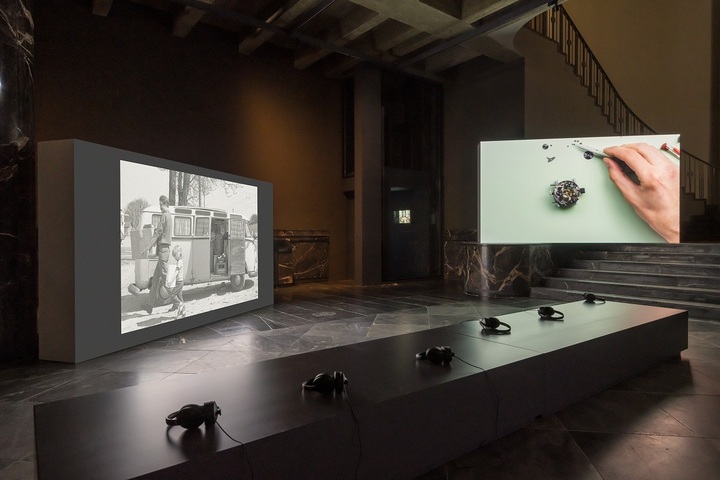Fluentum, Berlin
Fluentum, Berlin
Fluentum, Berlin

Artists: 13BC (Vic Brooks, Lucy Raven, Evan Calder Williams), Klaus vom Bruch, Keren Cytter, Loretta Fahrenholz, Margaret Honda, D’Ette Nogle, Richard Sides, Valerie Snobeck, Florian Wüst
Contrary to the apparent neutrality of exhibition spaces, Fluentum’s architecture is marked with absent narratives and material traces that bear witness to the turning points of the 20th century. The historically saturated building originated in the years of National Socialism and subsequently was part of German postwar history and the Cold War. Shortly after its last political utilization as a US military headquarters had ended, the venue was repeatedly reactivated as a film set from the 1990s on. In its role as a supposedly authentic setting for historical productions, the site provided international film projects with a material reference to another time, such as Quentin Tarantino's Hollywood blockbuster Inglourious Basterds (2009) or the 1995 movie Killer Condom, distributed by cult production company Troma Entertainment. These superimpositions of narratives and historical relics in the medium of the moving image serve as the leitmotif for the group exhibition Time Without End. The works in the show follow the characteristic feature of Fluentum’s exhibition spaces, namely of allowing the past to appear in the present.
Contrary to the apparent neutrality of exhibition spaces, Fluentum’s architecture is marked with absent narratives and material traces that bear witness to the turning points of the 20th century. The historically saturated building originated in the years of National Socialism and subsequently was part of German postwar history and the Cold War. Shortly after its last political utilization as a US military headquarters had ended, the venue was repeatedly reactivated as a film set from the 1990s on. In its role as a supposedly authentic setting for historical productions, the site provided international film projects with a material reference to another time, such as Quentin Tarantino's Hollywood blockbuster Inglourious Basterds (2009) or the 1995 movie Killer Condom, distributed by cult production company Troma Entertainment. These superimpositions of narratives and historical relics in the medium of the moving image serve as the leitmotif for the group exhibition Time Without End. The works in the show follow the characteristic feature of Fluentum’s exhibition spaces, namely of allowing the past to appear in the present.
Time Without End presents video works, multimedia installations, and site-specific pieces that are dedicated to the textures of time, history, and narrative, asking how time-based media generates memories. The works become membranes for stories, people, contexts, and processes to break through to the here and now. Via the artistic use of methods of documentation and fiction, montage and research, duration and presence, the works illustrate how narratives attach themselves to specific locales, images, and materialities. As a curatorial guideline, the exhibition seeks to closely engage with the history of Fluentum’s space and its sedimented narratives, aesthetics, and historical occurrences. Some of the works are new commissions and were created out of invitations to artists to bring their own practice into dialogue with the site and its past.
How does one exhibit absences and pasts that are only latent in the present? And how can engaging with buried histories render one’s own position visible? Time Without End demonstrates how artistic and curatorial practice, historical memory, and mediatized images intertwine. The question here is not only where we are, but also: when?
With Time Without End, Fluentum inaugurates the program series In Medias Res: Media, (Still) Moving, curated by Dennis Brzek and Junia Thiede.